| 1 | Red-tailed hawk |
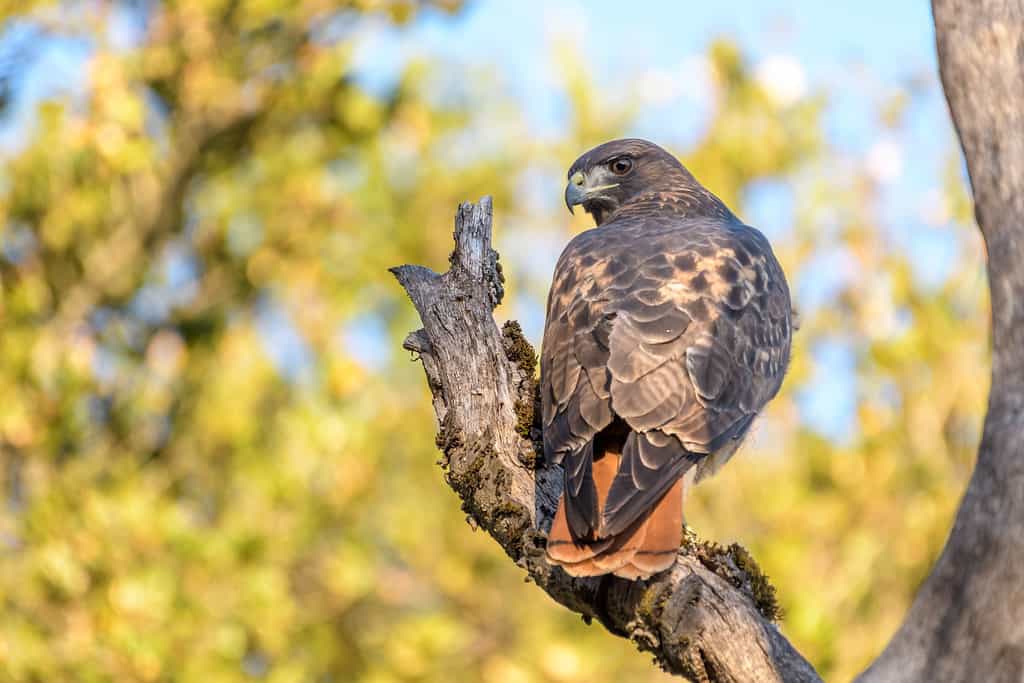
The red-tailed hawk, or Buteo jamaicensis, is found in every single US state, all of central America, much of southern and western Canada, and even Caribbean islands. Red-tailed hawks average at a wingspan of 110-130cm, with a maximum in the largest females of 147cm. They don’t routinely attack human, yet become aggressively territorial in spring, and will assault all who attempt to claim their eggs.
However, most of their energy is saved for hunting their favourite prey – snakes. Red-tailed hawks have a long list of US natives they’re confirmed to hunt, and who knows what multicoloured rainforest creatures they scoop up in Costa Rica. In the USA, remains of night snakes have been found in their nests. A survey along the Colombia river of Washington state found that at 21.3% of prey captured, black racers were their favourite snake prey, followed closely by gopher snakes at 18%.
Red-tailed hawks are capable of scooping up, flying off with, and eating venomous snakes like Pacific rattlesnakes. However, a study from San Joaquin found that despite Pacific rattlesnakes outnumbering gopher snakes 5-fold in the local area, they still ate gopher snakes 225 times versus 83 for the rattlesnakes.
| 2 | Short-toed eagle |
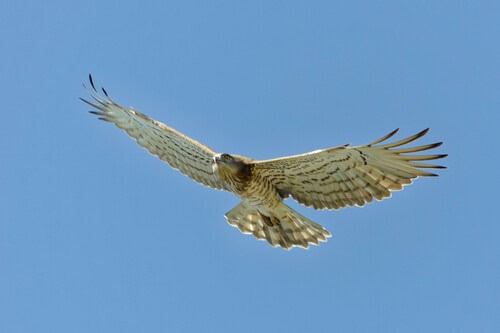
This pale bird has a wingspan of 170-190cm, and is also known as the snake-eagle in Europe. This is a solitary species which can turn violent if interrupted by fellow members of its species.
Short-toed eagles are quite widespread, appearing in northern Algeria, to Italy and even India. They appear in Britain occasionally – in 2014, hundreds gathered in Dorset to spot a lone short-toed eagle perched on a branch. However, Spain and Portugal are probably their most concentrated spots on Earth, and hear they inspire cold fear among the local snake population. Snakes make up over 90% of this bird’s diet, and 92.5% according to one study.
Short-toed eagles don’t just love snakes, but have fine taste buds attuned to certain species. Their favourite of all is the ladder snake, an aggressive yet non-venomous species which appears in dry countryside areas of Spain and moves by night. Their second favourite is the Montpelier snake, Spain’s longest, while they ignore the soil-burrowing false smooth snake, for reasons only they know.
For example, a Portuguese study found that ladder snakes contributed 28% of the short-toed eagle’s total calories. Montpellier snake contributed 42.2%, though as a proportion of availability (since Montpellier snakes were more abundant), short-toed eagles chose ladder snakes most commonly.
| 3 | Burrowing owl |
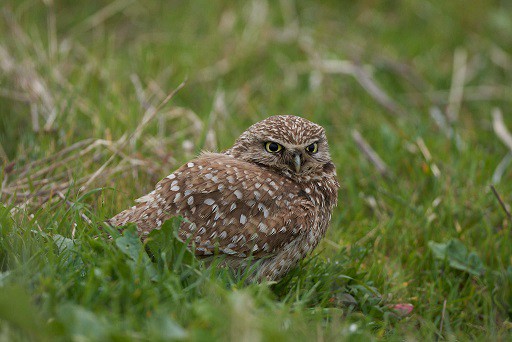
This snake-eating bird is relatively small, with a wingspan of 50-60cm, yet is no less aggressive than a larger hawk. Burrowing owls are found all across the Americas, from Argentina to southern Canada.
Burrowing owls aren’t fussy, as they have a very wide taste for snakes. New prey are being discovered regularly, as in 2021, when scientists in northeast Brazil spotted a burrowing owl in mid-air with a headless snake in its beak. A few metres from its nest opening, the owl dropped the snake, probably because it was spooked, and the scientists identified it as a Caatinga blackhead.
Decapitation is one of their gruesome specialties. This has been observed twice with the crossed pitviper (Bothrops alternatus), an inhabitant of sweeping grasslands in southern Brazil. On a dusty road, an owl took flight as scientists disturbed it with its headlights. It clearly had a snake in its talons, and landed a few metres away, and then it began ripping great chunks of flesh off the snake. When scientists tiptoed closer, they found that its head was missing. Burrowing owls are more than capable of preying on venomous snakes and living to tell the tale.
| 4 | Brown snake eagle |
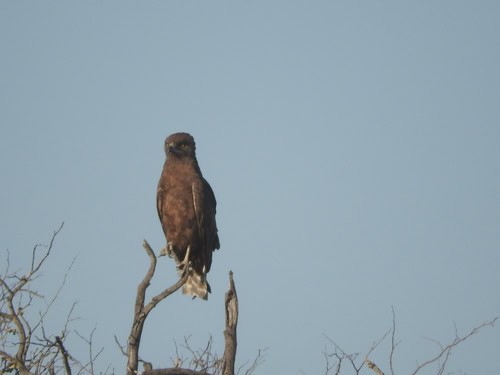
An exclusively African species. King cobras can breathe easy that this snake predator lives nowhere near them, but cape cobras and red spitting cobras definitely can’t. Brown snake eagles rely on the usual decapitation strategies before dropping the snake into their nest, ready to be consumed as a tasty meal later.
The unusual thing is how they show no discrimination about size. Brown snake eagles are willing to pick up snakes of any size, as long as they’re strong enough to carry them. A survey in Zimbabwe found that 3 of 4 identified snake species they took were venomous. These included a puff adder, boomslang, and black-necked spitting cobra. Reports state that they can eat black mambas as long as 2.8 metres.
Brown snake eagles (Circaetus cinereus) belong to the same family as the short-toed eagle of Spain, and they share their dietary tastes. Unlike other snake eagles though, they rarely rip their snake prey apart mid flight. Brown snake eagles also prey on monitor lizards and guineafowl, but snakes are their favourite meal. To protect themselves from bites, they have especially thick skin on their legs.
| 5 | Great horned owl |
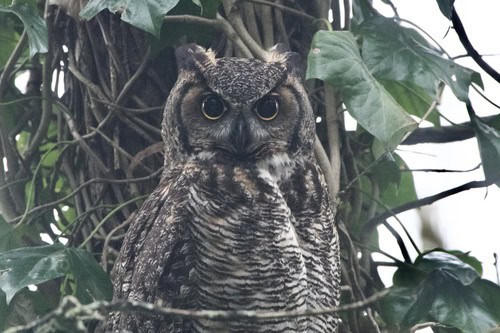
The great horned owl may be the most abundant owl in the USA. Sightings are plentiful in every state, and they’re also common in Central and South America, though never in rainforest regions. Great horned owls have a wingspan of 1.4 metres and prefer to wait on a perch while scanning the ground, sometime shifting perch position by 50-100 metres. It’s been found that their maximum effective hunting range is 90 metres, and they have excellent maneuverability due to their short yet broad wings.
This is all bad news for the local snakes, as great horned owls have been recorded eating many species. They eat such non-venomous snacks as garter snakes, black racers, night snakes and kingsnakes, and spicy venomous treats like cottonmouths and prairie rattlesnakes. Their non-snake prey includes the hatchlings of alligators and loggerhead turtles.
Great horned owls are so common that if they suddenly went extinct, maybe because of a disease that only affects them, the snake population might suddenly jump. The same is true for red-tailed hawks. Cottonmouths might be king of the USA, not humans, if it wasn’t for a couple of helpful birds, who do all this without being asked.
| 6 | White-bellied sea eagle |
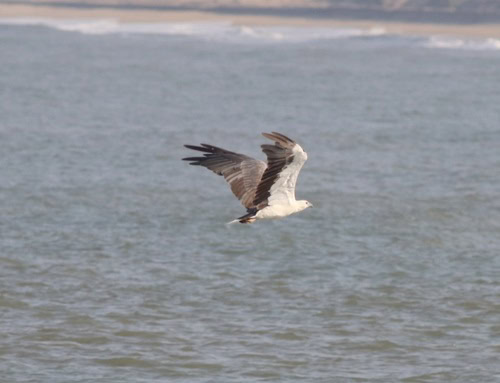
This species is the master of reptiles on the open seas. White-bellied sea eagles are found from the Indian coast to southeast Australia, and are a distinctive bird, which appears completely grey from behind except for its white head. From the front, their chest, neck and face are a snowy white, and they have the signature downturned beak of eagles. White-bellied sea eagles are confident enough on the open waves to hunt saltwater crocodile hatchlings, according to a sighting from the Bhitarkanika mangrove on the east Indian coast.
According to a study conducted in Australia’s Northern Territory over 7 years, their absolute favourite prey was the northern long necked turtle, at 33.8% of total prey, but the Arufura wartsnake came in at 6%. This is a warty snake with enhanced oxygen absorption mechanisms, and multiple studs on its scales which enable it to grip slippery fish prey. 56% of the snakes they hunted were 50cm in length or more.
White-bellied sea eagles also prey on dog-faced water snakes (Cerberus rhynchops), Macleay’s water snakes (Enhydris polylepis), and little filesnakes (Acrochordus granulatus).
| 7 | Secretary bird |
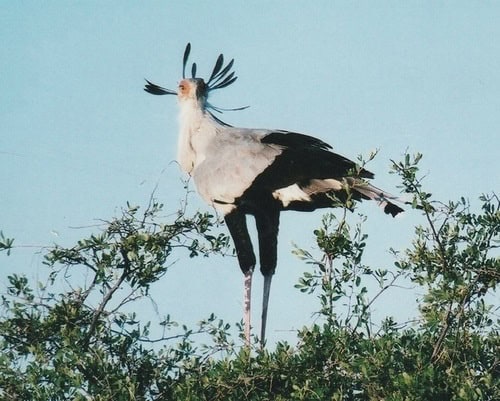
This southern African bird is downright vicious. They’re going to make the savannah their personal fiefdom and they have no qualms with beating up any animal that gets in their way. Secretary birds have a wingspan of up to 2.1 metres, and are capable of fighting off hyenas, so slurping down snakes like spaghetti is no problem for them. They look more like a mutated mixture of an ostrich and a chicken, though they’re actually the only member of the Sagittarius bird family.
Secretary birds live only in Africa, particularly South Africa. Their confirmed snake prey include olive snakes (Lycodonomorphus inornatus), spitting cobras and puff adders. There’s still mystery surrounding this bird, as a classic tale is that when hunting snakes, secretary birds simply pick them up, gain height by flapping their wings, then drop them from a great height to deliver the finishing blow.
However, footage shows that secretary birds much prefer to kick their prey to death, including venomous cobras. They have long, thin yet powerful legs, and once done, they pick the snake up and start ripping large chunks off.
| 8 | Laughing falcon |
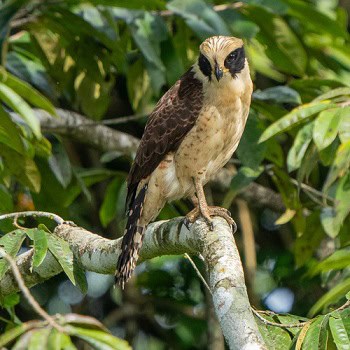
It sounds terrifying: a bird that not only dines on snakes, but laughs maniacally as it does so. The truth is that laughing falcons were named for their loud alarm call, which sounds close to a human’s laughter.
It’s also true that snakes form the majority of this South American bird’s diet. Confirmed prey include Guibe’s flame snakes, Halloween snakes (Pliocercus euryzonus), and Aesculapian false coral snakes (Erythrolamprus aesculapii). Laughing falcons are capable of preying on venomous coral snakes, including central American coral snakes (Micrurus nigrocinctus).
Laughing falcons (Herpetotheres cachinnans) don’t swoop down on their snake prey. They prefer to perch themselves, then drop down or pounce, which creates an audible thud. This is a loud snake in general, and they have different strategies depending on size. They seize small snakes in their beak, fly to their nest and swallow them whole. With larger snakes, they carry them off, then rip large chunks of their body to create bite sized portions.
Like burrowing owls, they regularly decapitate their snake prey. One laughing falcon was spotted eating a coral snake on a branch perch 10-15 metres high, picking at its tail occasionally, taking its time with its snack.
| 9 | Brown falcon |
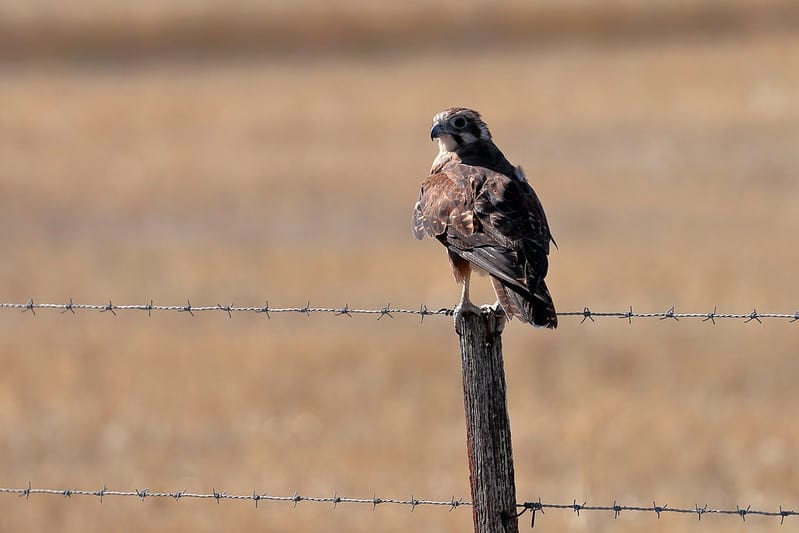
The brown falcon has a wingspan of 85-115cm, and is found across the entire Australian mainland, from Sydney to parched Pilbara in the west. It’s also found on New Guinea to the north, in both the Indonesian and Papuan halves.
Australia has so many snake species that if you were a bird, you’d be a fool not to eat some, and brown falcons have a particular fondness for eastern brown snakes. In one study scientists cut open a brown falcon and found two eastern browns in its belly, measuring 25cm and 50cm each. 2018 saw a headline when a farmer spotted a brown falcon carrying away an eastern brown snake in New South Wales, measuring approximately 80cm.
Eastern brown snakes may inspire terror when they slither through playparks or lunge at people in alleyways, yet they have their problems to deal with too.
Tiger snakes are also part of the brown falcon’s diet. Like the laughing falcon, they prefer to wait on a perch like a branch, then drop down onto prey, effectively making them an ambush predator, unlike other birds which circle overhead and scan the ground with their keen vision.
| 10 | Laughing kookaburra |
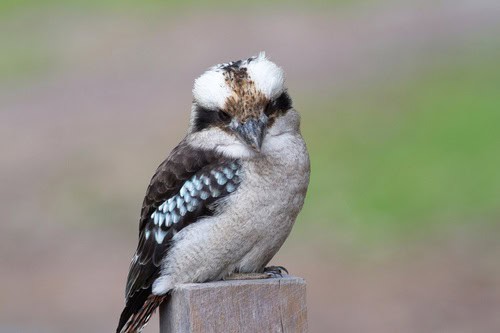
This Australian bird is such a snake-eater that in the 19th century, Australian farmers introduced it to new regions just to reduce numbers. Laughing kookaburras have a wingspan of up to 65cm, and are most concentrated along the Australian east coast, with an isolated colony in southwest Australia near Perth as well.
This bird produces laughter in unison. One kookaburra begins with a low chuckle, several neighbours join in, and before you know it there’s a cacophony of bird laughter. As for snakes, laughing kookaburras often thrash them against rocks or trees to kill them. The Perth colony was artificially introduced by humans, with the first releases in 1883, and hundreds of kookaburras were released between 1897 and 1912.
Kookaburras can sometimes go too far in their snake-guzzling quests. Look at this photo from 2023, which shows a laughing kookaburra perched on a tree, with a snake of at least 1 metre dangling from its mouth. It seems to have forgotten to rip the snake into bite-sized chunks beforehand. There’s a slight look of panic in the bird’s eyes and its only option is clearly going to be to regurgitate it. The snake wasn’t identified, but closely resembles an eastern brown snake.
